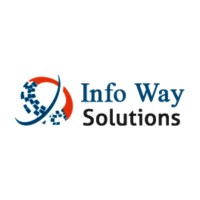Description
Responsibilities
Applies knowledge, methodologies, and principles of safety engineering Such as MIL-STD-882E, Software Safety engineering as defined in the Joint Software System Safety Engineering Handbook (JSSSEH) and/or Automotive ISO26262.
Reviews product systems associated support equipment and facilities, functional specifications and operations, and establishes safety requirements for assigned systems.
Independently analyzes and recommends safety criteria in system design, equipment, and procedures to control or eliminate hazards.
Develops requirements and designs, assess implementations for hazard and causal factors to satisfy critical system safety objectives.
Develops and evaluates systems, associated support equipment and facilities, networks, and information systems to ensure designs meet applicable safety specifications and standards.
Collaborate with various design teams in the execution of various MIL-STD-882E and/or ISO26262 standard hazard analyses.
Applies engineering principles to investigate, analyze, plan, design, test, or evaluate military systems.
Reviews and prepares engineering and technical analyses, reports, change proposals, and other technical documentation for system safety and in support of Airworthiness Certification IAW MIL-HDBK-516
Reviews Software architecture, Software Designs, requirements, and interface artifacts for safety on complex hardware/ software systems
Reviews Test Plans and Procedures for safety requirements verification and potential hazardous operations
Ability to apply system safety engineering principles in accordance with MIL-STD-882 and ISO 26262 and analyses such as preliminary hazard analyses, function/system/subsystem hazard analyses, fault tree analyses, software system safety analyses and safety assessment reports.
Familiar with requirements development, system/software architecture, hardware/software design, software code implementation, test, verification, and validation
Demonstrated ability to develop, review, update and approve system safety artifacts and system safety requirements
Perform hardware/ software safety analysis.
Ability to effectively communicate with all levels of leadership and customers and work independently.
Experience developing of C/C++ embedded software artifacts.
Experience with model-based software development techniques
Qualifications
Bachelor of Science degree in: Computer Engineering, Electrical Engineering, Mechanical Engineering, Aerospace/Aeronautical Engineering. Other engineering/science degrees will be considered with relevant experiences.
7 years of experience Software Safety for embedded software using MIL STD 882E, ISO 26262 or equivalent standards.
Demonstrated ability to analyze, recommend, and drive safety into system design, equipment, and procedures in order to mitigate or eliminate hazards.
2 years of experience developing software in C/C++.
Bonus Qualifications
Advanced Degree in: Computer Engineering, Electrical Engineering, Mechanical Engineering, Aerospace/Aeronautical Engineering. Other engineering/science degrees will be considered with relevant experiences.
Familiarity with requirements tools such as Cameo, CPLM, Safety and Reliability tools such as PTC Windchill Quality Solutions, Agile software tools, JIRA, Confluence, MATLAB/Simulink/Stateflow.
Experience working in a scaled Agile organization.
Working knowledge of embedded software test development, and Software systems integration engineering
Experience in Mechanical, Electrical and Software Integration
System Safety Experience
Experience in Defense development desired
Key Skills
Education
Bachelor's degree
- Posted On: 30-Nov-2024
- Experience: 7+ years of experience
- Openings: 1
- Category: Advanced Embedded Software Safety Engineer
- Tenure: Contract - Corp-to-Corp Position

